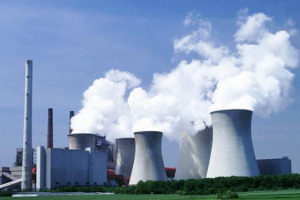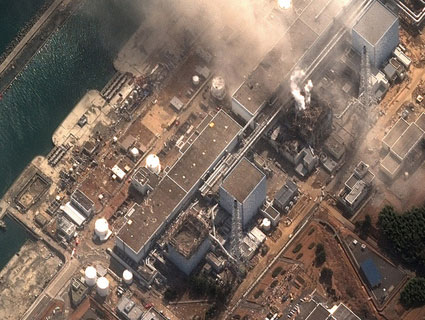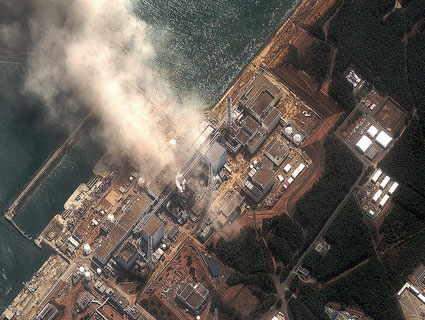
Photo: Wikimedia Commons
Many have wondered what Japen’s nuclear crisis means for the nuclear renaissance that US politicians on both sides of the aisle have been pushing in recent years. The industry got a financial boost last year when the Obama administration called for tripling of a loan guarantee program for new nuclear plants to $54.5 billion. The Department of Energy says that the loans will help spur the construction of up to 13 new reactors in the US. But the big figures belie the fact that the nuclear rebirth was already facing problems.
It’s been three decades since a new nuclear power plant was built in the United States. The nuclear industry has made it quite clear that it can’t get back on its feet without significant backing from the federal government. And while there has been increased political interest in providing the loan guarantees, the most promising proposed plants have all faced significant setbacks.
Last October, it became clear that the proposed expansion at the Calvert Cliffs Nuclear Power Plant in Maryland isn’t going to happen any time soon. The Department of Energy was preparing to offer one of its new loan guarantees to Constellation Energy, which owns and operates the two generating units already on the site on the western shore of the Chesapeake Bay. The company, in partnership with French utility EDF Group, had outlined plans to build a third reactor there.
In order to get one of these loan guarantees, recipients are expected to pay a credit subsidy to the DOE to cover the risk should the project fail. The figure is a percentage of the loan based on the probability that the plant will go belly up, meant to protect taxpayers from taking on the burden of paying back investors. (I explain the high default risk and the credit subsidy in more detail here.) But when DOE offered its estimate of how much Constellation should have to pay up front last October, the company bailed—complaining that the 11.6 percent credit subsidy cost, totaling about $880 million for the $9.6 billion project, was “unworkable.” EDF is now looking for a new US partner on the project in order to keep the plans to build a new reactor alive.
Meanwhile, the first recipient of a DOE loan guarantee, the Vogtle project in Georgia, has yet to obtain a permit from the Nuclear Regulatory Commission, which has cited concerns about safety shortcomings with its shield design. The NRC has been moving toward approving the design in the next few months, though an NRC engineer has still expressed concerns that the shield is not strong enough to withstand an earthquake—an issue that’s gotten a whole lot more important in the past week.
Another top contender for a loan guarantee, the South Texas Project near Bay City, Texas, stalled last year after skyrocketing cost projections prompted San Antonio’s municipal utility, CPS, to back out of the venture. That sparked a legal dispute with NRG Energy, the lead on the project, which then had to go looking for new investors. NRG eventually partnered up with Tokyo Electric Power Co. (TEPCO)—the owner of the distressed reactors in Japan—which agreed to take on a 10 percent stake in the deal if the loan guarantee came through. The NRC is holding a hearing on whether to grant the first stage of approval for the project today. But given the situation still unfolding in Japan, it’s not clear whether TEPCO will be able to follow through with that promise, making the future of an expansion in Texas once again murky.
And those are just the problems facing a few of the top nuclear candidates. So while the situation in Japan may well change the conversation about nuclear power here in the US, the reality on the ground was already looking bleak for a nuclear renaissance.










